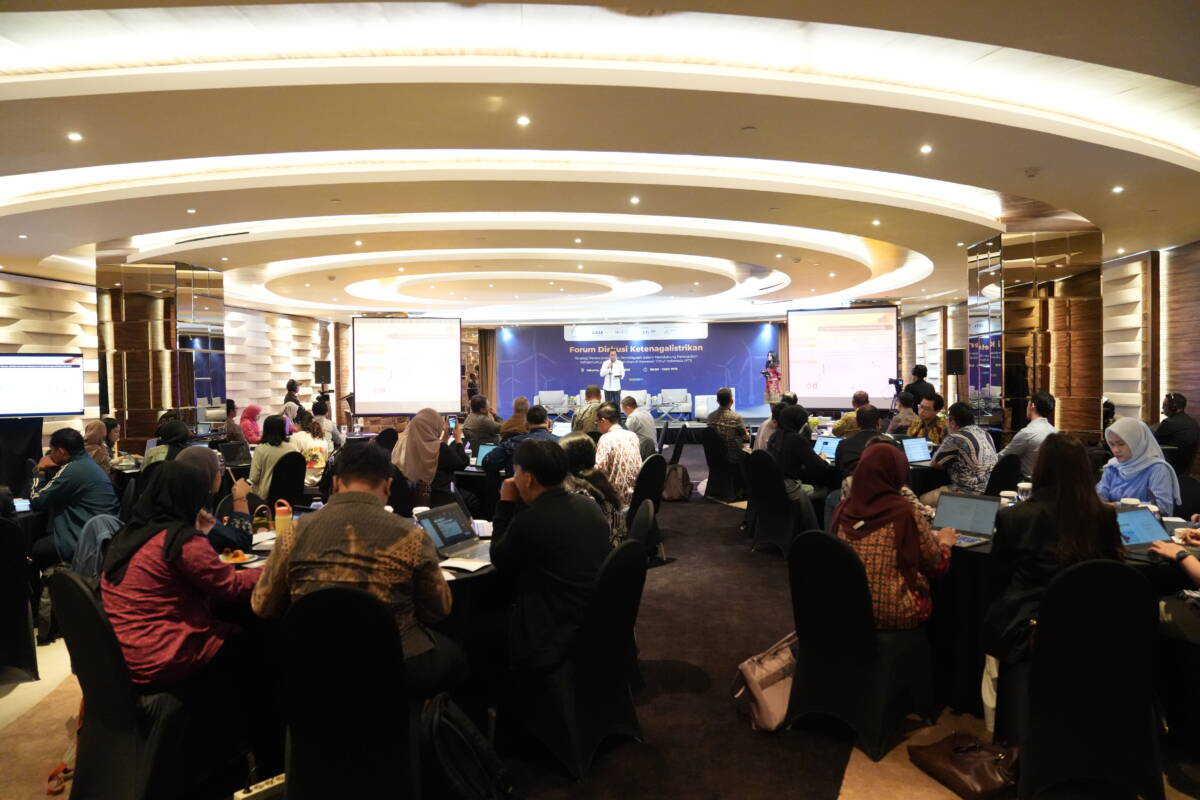Jakarta, 16 September 2025 – Eastern Indonesia (KTI) holds vast renewable energy potential, with solar energy potential reaching 165.9 GW and wind energy reaching 167 GW (RUPTL 2025-2034). However, despite this potential, Eastern Indonesia faces several challenges in fully utilizing its renewable energy resources, including inadequate electricity infrastructure, financing issues, and difficult geographical conditions.
These challenges mean that many communities, especially those in the country’s outermost, frontier, and underdeveloped (3T) regions, do not have adequate access to electricity. Most communities in Eastern Indonesia currently rely on diesel power plants (PLTDs) for their electricity needs. Unfortunately, fuel shortages pose a significant obstacle to providing these communities with 24/7 electricity.
Renewable energy offers a solution to provide electricity access to Eastern Indonesia, especially given the fuel shortages for diesel power plants. It is also a cleaner and more affordable option for 3T regions that are not connected to the main electricity grid.
The Clean, Affordable and Secure Energy (CASE) for Southeast Asia project, in collaboration with the Green Energy Transition Indonesia (GETI) project, organized an Electricity Discussion Forum on September 16th. The forum aimed to delve deeper into planning and financing strategies to support electricity infrastructure in Eastern Indonesia.
The discussion brought together various stakeholders, including government officials, state-owned enterprises (BUMNs), the private sector, financial institutions, and energy experts. The goal was to explore solutions that can support a just energy transition in Indonesia.
The forum was opened by Yusuf Suryanto, Director of Transmission, Electricity, and Aerospace (TEA) at the Ministry of National Development Planning/Bappenas at the Ministry of National Development Planning/Bappenas. He provided an overview of the current status and plans for electricity development in Indonesia, with a specific focus on the Eastern region. Yusuf explained that from a supply perspective, a significant gap between electricity demand and supply still exists in various areas. Therefore, a single solution is not enough. Community-based solutions are needed to drive the growth of electricity, particularly from renewable sources, in Eastern Indonesia.
“In addition to technological innovations that can support the electricity sector’s development, building the capacity of local communities, especially those in 3T areas, is crucial. We hope that all stakeholders can collaborate to develop locally based solutions,” Yusuf said.
Through the National Long-Term Development Plan (RPJPN) 2024-2045, the Ministry of National Development Planning/Bappenas has designated Eastern Indonesia as a new and renewable energy (NRE) growth hub. This is a strategic move to achieve the target of a 70% NRE mix by 2045. This policy direction aligns with the principles of a Just Energy Transition (JET), which emphasizes that the transition must be fair and inclusive. This process must involve all stakeholders—government, private sector, academia, and the public—to ensure that economic, social, and environmental benefits are shared equally.
Furthermore, the Ministry of Energy and Mineral Resources (ESDM) has established the Electricity Supply Business Plan (RUPTL) 2025-2034, which promotes the development of new and renewable energy (NRE) power plants across Indonesia. By 2034, a total of 69.5 GW of new generation and storage capacity will be added. Of this, 76% will come from NRE sources like solar, hydro, wind, and geothermal, complemented by energy storage systems such as batteries and pumped-storage hydropower.
30% of this new NRE capacity will be from Variable Renewable Energy (VRE) sources like solar and wind, which require greater grid system reliability and flexibility. This marks a significant shift from the current situation, where VRE’s share of Indonesia’s electricity mix was only 0.5% at the end of 2024.
From a utility perspective, Bekti Wacono, representing PLN, presented the plan for developing electricity infrastructure in Eastern Indonesia under the RUPTL 2025-2034. The plan includes building 4.5 GW of power plants, 3,900 kilometers of transmission lines, and substations with a capacity of 2,100 MVA, with an estimated investment need of Rp 145 trillion.
However, only Rp 12 trillion in funding is available until 2029. Therefore, PLN stressed the need to develop electricity demand in Eastern Indonesia while also finding new alternative financing options.
“Financial viability in Eastern Indonesia is indeed a challenge. Strategic projects, especially in 3T regions with limited financial viability, require concessional financing or subsidies to be realized,” Bekti explained.

